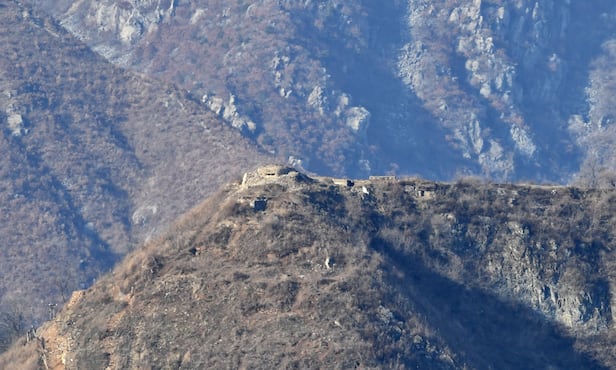South Korea’s military manipulated inspection findings in 2018 to claim that North Korean guard posts in the Demilitarized Zone (DMZ) had been dismantled under a landmark inter-Korean military agreement aimed at easing border tensions, despite knowing that key underground facilities remained intact, the state audit agency found.
According to the Board of Audit and Inspection (BAI), the Joint Chiefs of Staff ordered soldiers who conducted on-site inspections to sign off on a falsified report that concluded the North’s guard posts were “disabled,” despite evidence to the contrary.
The deception was aimed at preserving the timeline for the military pact signed on Sept. 19, 2018, during the Moon Jae-in administration. To carry out the plan, the South Korean military is also suspected of misleading the United Nations Command (UNC), which oversees the DMZ, to secure approval for the guard post withdrawals.
The BAI has requested the Supreme Prosecutors’ Office investigate six former military officials, including former Defense Ministers Jeong Kyeong-doo and Suh Wook. Prosecutors assigned the case to the Seoul Western District Prosecutors’ Office earlier this month.

Internal documents obtained by prosecutors showed that before the 2018 agreement, the Joint Chiefs of Staff warned the Defense Ministry that withdrawing an equal number of posts from both sides would be unfavorable to the South, as the North operated more than twice as many. The report also highlighted potential vulnerabilities in border security, but the concerns were dismissed. The ministry proceeded with the plan and sought authorization from the UNC.
To secure that approval, the Joint Chiefs reversed their assessment, submitting a document to the UNC commander – who also serves as the head of U.S. Forces Korea – stating that the withdrawal of 11 South Korean guard posts would not undermine operational readiness.
The two Koreas demolished a total of 21 guard posts in November 2018 – 11 in the South and 10 in the North. But while South Korean guard posts were mostly above ground, the North’s posts included key underground tunnels connecting observation points and firing ports with command centers and ammunition depots. The demolition of aboveground structures alone was not enough to render them inoperable.
To verify the demolitions, North Korea proposed a one-day joint inspection on foot for Dec. 12. South Korea’s Joint Chiefs of Staff acknowledged that the method would not allow for confirmation of underground destruction, which would require ground-penetrating radar equipment that was both in short supply and difficult to carry by foot.
Nevertheless, the South accepted the terms and changed the verification standard from “complete destruction” to “disabling,” allowing the North’s demolition to be deemed sufficient if entrances to underground structures were sealed.
During the inspection, South Korean teams confirmed that at least one North Korean post remained operational with armed personnel present. They identified three suspected underground structures and could not verify whether 31 of 72 firing ports had been destroyed. None of the sites were confirmed to have fully eliminated their underground facilities. When inspectors attempted to approach suspicious areas, North Korean personnel blocked them, citing landmine risks.
Despite these findings, the Joint Chiefs altered the conclusion of the report to state that the North’s posts had been “disabled.” On Dec. 14, team leaders were summoned and pressured to sign the revised report to prevent future contradictions, the audit agency found.
Even before the inspections, the Defense Ministry had prepared a press release asserting full compliance by the North and complete destruction of its aboveground guard posts. On Dec. 17, the ministry publicly declared that North Korea had disabled its DMZ guard posts.


